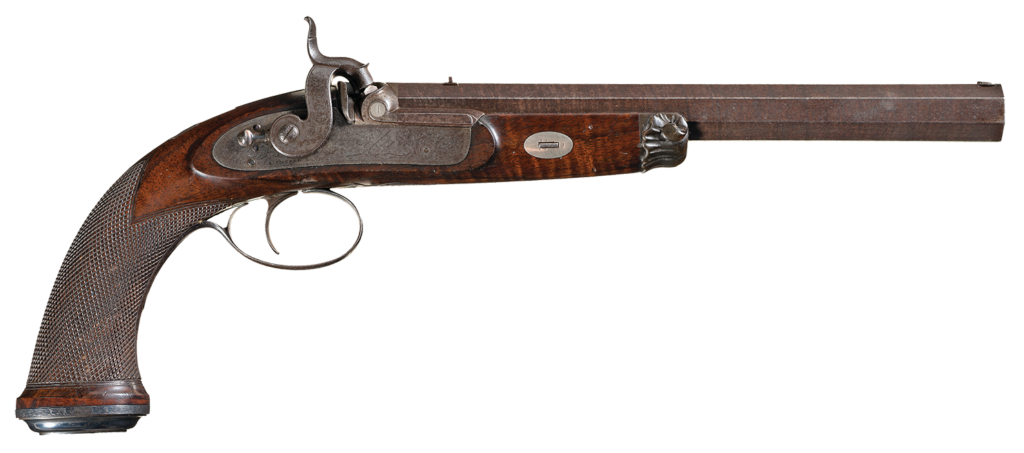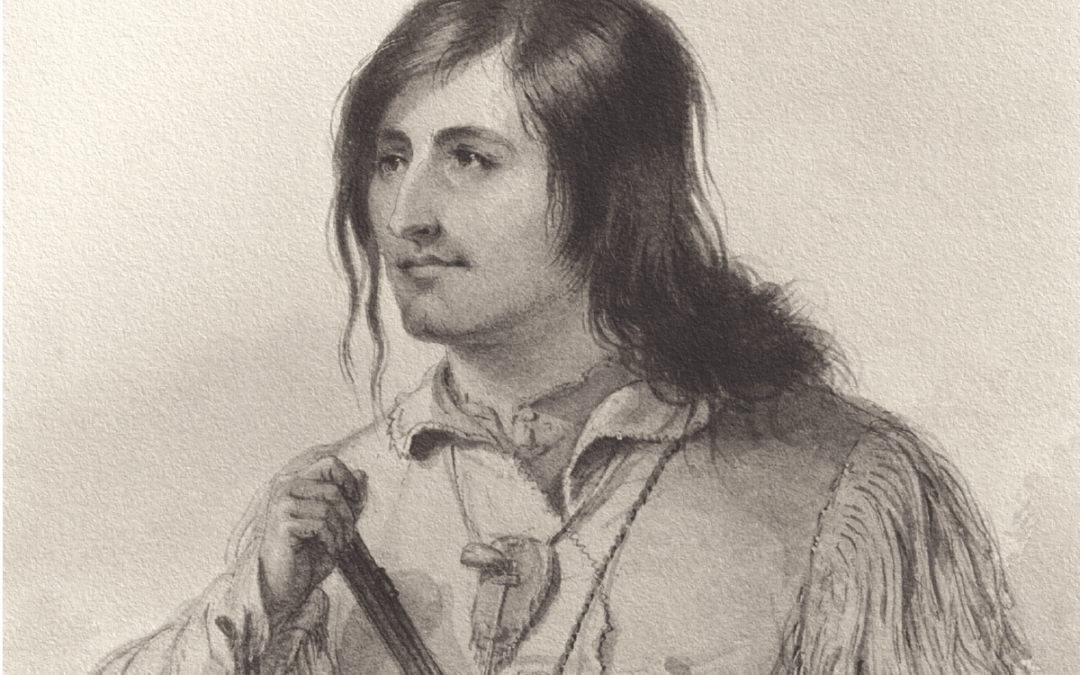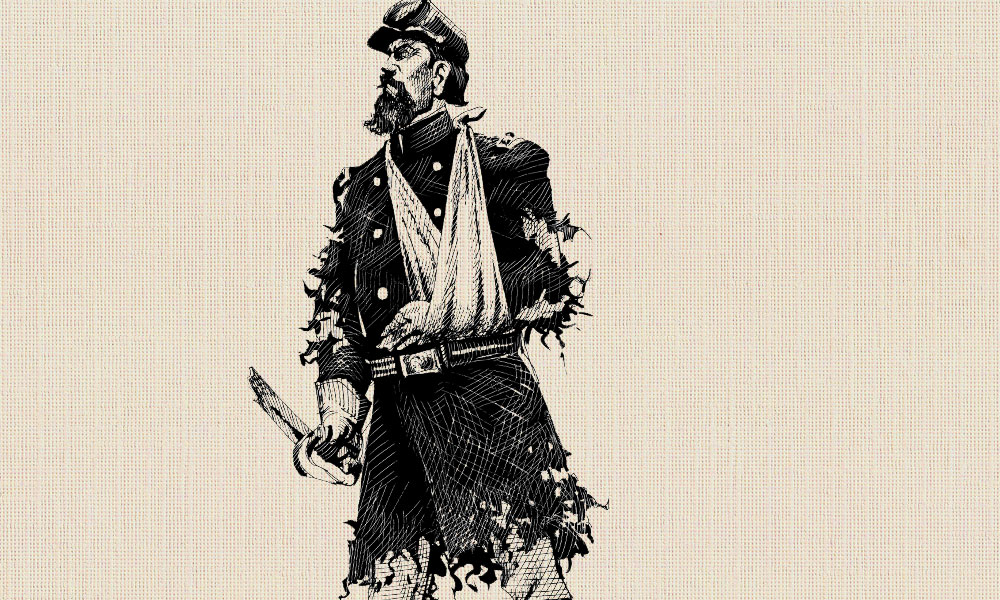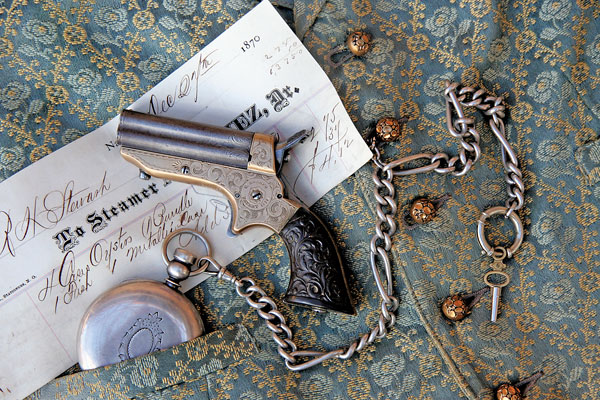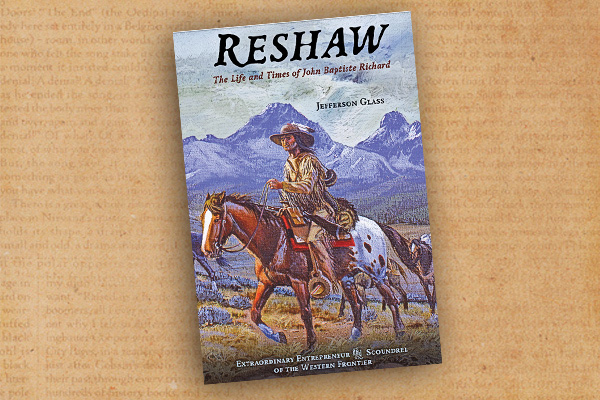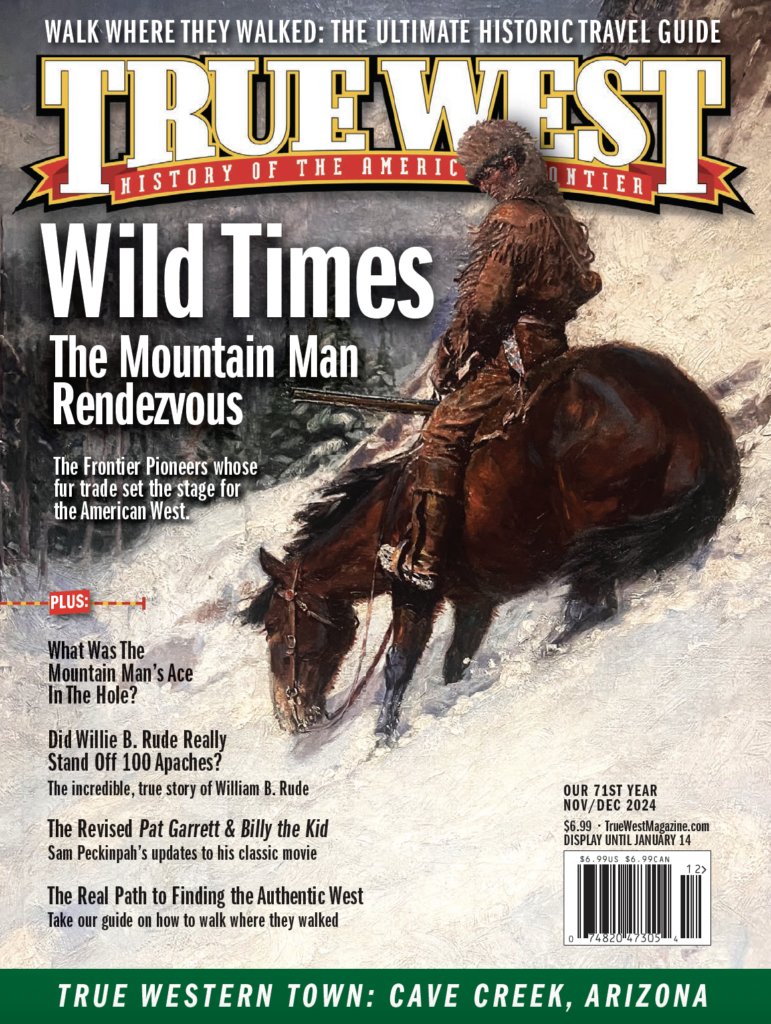In the discussion of firearms of the fur trade era, handguns are usually given a back seat and are seldom mentioned in any detail. In reality, though, the trappers and traders placed a great value on them. True, while they lack the accuracy, range and power of the longarm, in a desperate situation such as a fight with hostile Indians or the sudden attack of a ferocious beast, the extra firepower a handgun or two might afford made them indispensable to these frontiersmen in the age of single-shot muzzleloading arms. Pistols were also quite popular with the mountain men as trade items and for sport as well, especially for running buffalo on horseback.
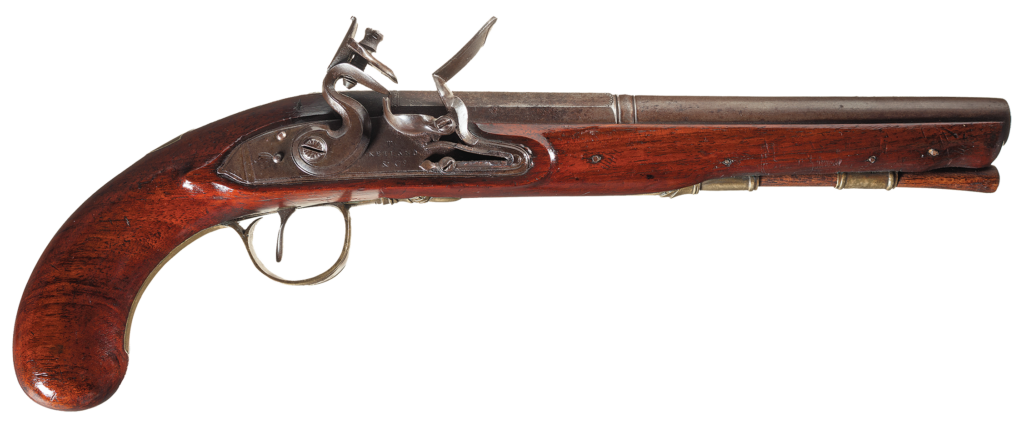
Many Western adventurers of that era carried two or more pistols in their belts or saddle holsters, giving them several shots before reloading. Whether in flintlock or percussion ignition, such pistols varied with the preference of the man who carried them. Regardless, they were predominantly single-barreled horse pistols of the military or “dragoon” type in .52 caliber or greater that sported barrels of 8 to 10 inches or more. Worn in braces (pairs) or packing more, even with their heavy smoothbore or rifled barrels—these handguns did not add significantly to the overall weight one carried and could mean the difference in life or death. As Western hunter Osborne Russell recalled when he and other trappers feared a possible Indian attack in 1835, he wrote, “I kept a large German horse pistol loaded by me in case they should make a charge when my gun was empty.”
As far back as the mid-18th century, pistols were considered essential as trade items as well as for defense by trappers, hunters and traders. We know that the government provided Capt. Meriwether Lewis “1 pr. Horsemans Pistols” among the firearms and other stores for the Corps of Discovery’s (1803-1806) expedition. Captain Lewis and Lt. William Clark each recorded their carrying of pistols and trading them for horses, and in 1805-1806, the expedition found Indians as far west as along the Columbia River armed with pistols.
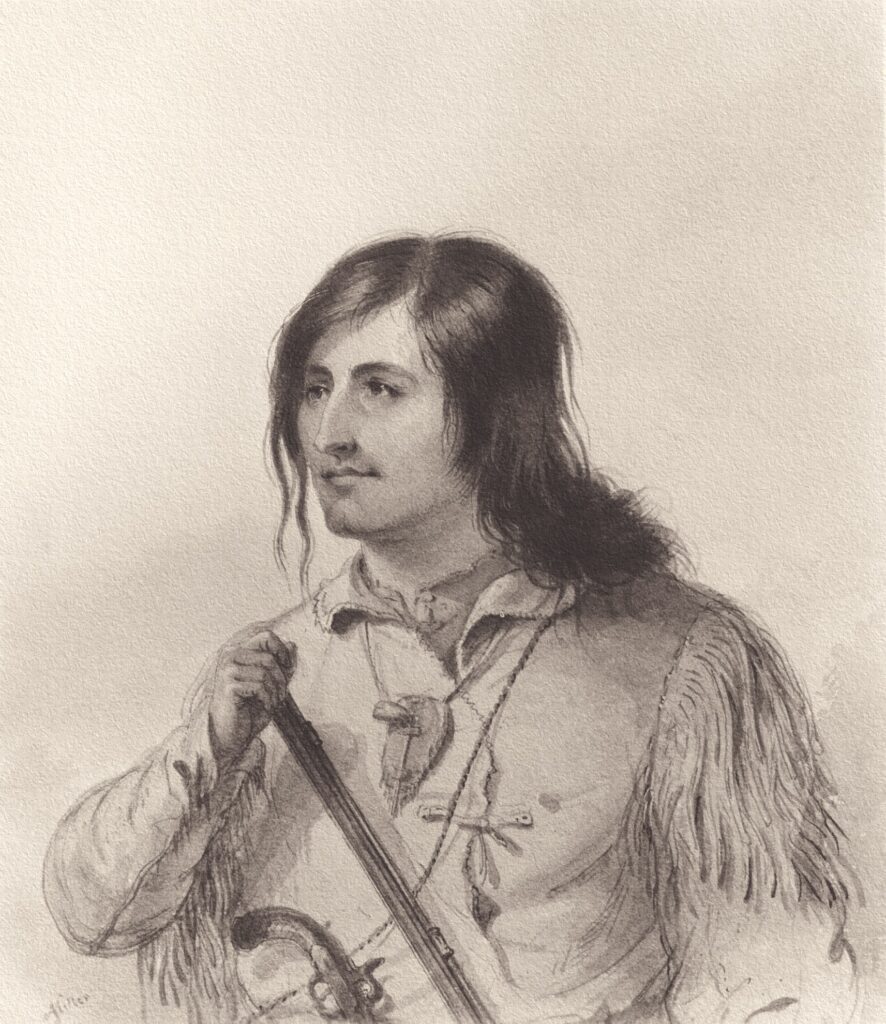
By the early 1800s, gunmakers in the settlements along the edge of civilization were doing a brisk business in pistols of all sizes and configurations—from big-bore horse pistols to finely made Kentucky-type and dueling pistols to diminutive pocket guns—many destined for the fur trade. One notable ad for “Sales at Auction” in St. Louis in June 1816 advertised “Horseman’s Pistols, Powder Flasks, Shot Pouches” along with a selection of smaller pocket-sized handguns, while a local competitor, Smith & Spicer, who boasted of being “Lately from New York” carried flasks, gun locks and “Holster Pistols” (.45-.54 caliber Kentucky and dueler types) in their inventory.
Besides the heavy martial horse or dragoon-sized pistols, just about any handgun of the era might have been used by these men of the mountains. Along with English and European sporting and dueling pistols, American surplus military arms could be found in holsters or tucked into waistbands, along with imported guns like those from Ketland & Co. of London or Birmingham. Actually, this British arms maker exported a large number of pistols to American shores both for the civilian trade and as government contract arms. By the late 1830s and the final years of the fur trade, the Hawken brothers, famous for their mountain rifles, were also turning out a few large-bore holster and belt pistols in percussion ignition.
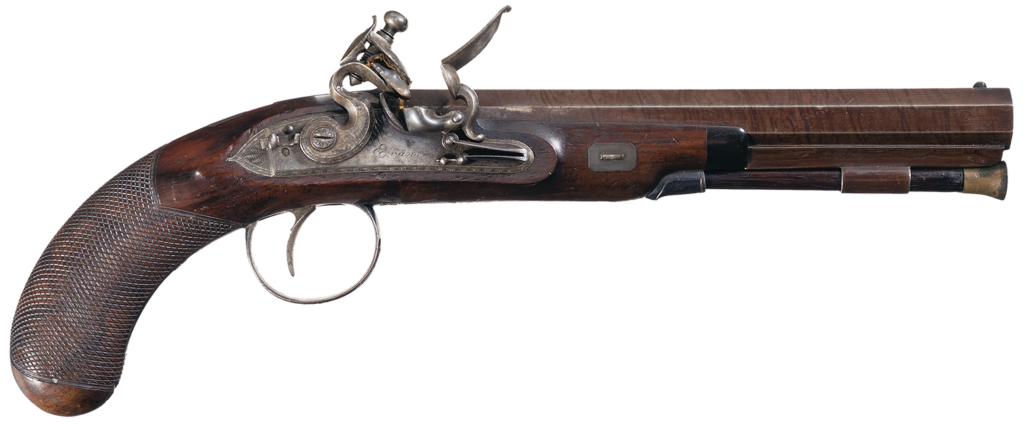
Sometime around 1820, British gunmakers began converting their earlier flintlock dueling pistols to percussion and started producing them in caplock form along the same general lines as the older arms. By 1834 Ethan Allen had patented the double-action system for the multibarrel pepperbox revolvers. Single-action pepperboxes that required manual rotation of each barrel, although popular in the far West, had enjoyed a limited popularity with the mountain men, due to their temperamental nature and exposed nipples, which could lead to unintentional discharges.
With the general acceptance of the percussion system, the development of multi-shot pistols was given a considerable boost, and although a few double-barreled pistols had seen some use on the beaver front, it was the caplock that gave real credence to repeating handguns.
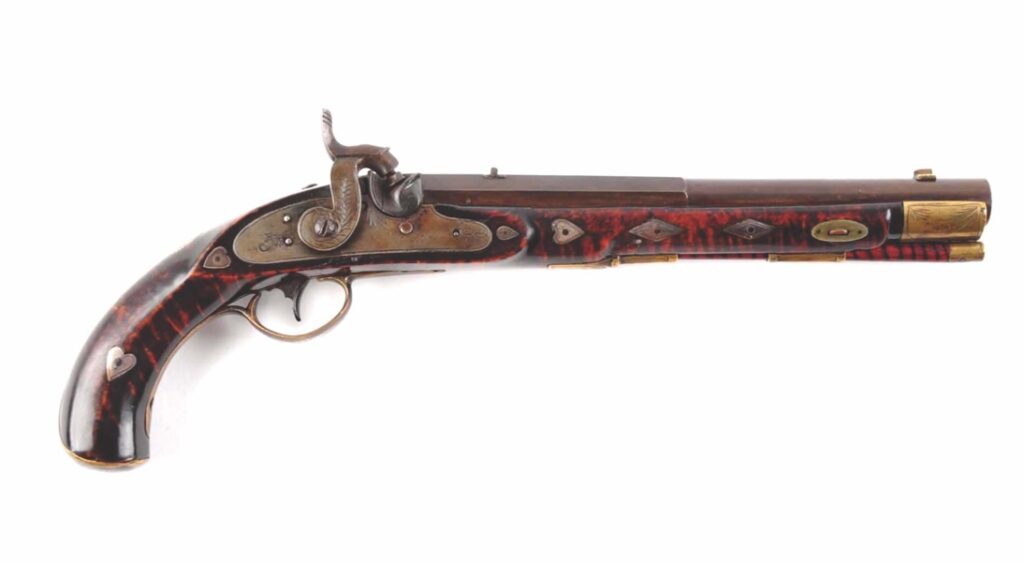
With the invention of Colt’s repeating pistols in 1836, and having a small number of them reaching the far West over the next few years, the age of single-shot handguns began a rapid decline into the back pages of history. Ironically, the late 1830s also saw the last few seasons of the beaver trade, the great rendezvous and the men who had roamed the mountains in search of beaver skins. By the early 1840s those hardy trappers who remained on the frontier became scouts, hunters and pathfinders for eastern emigrants and found themselves out on the plains rather than in the Rockies. A little more than a decade later, the single-firing pistols of the fur trade had given way to the five- and six-shooters of Wild West fame. As one Indian survivor of an 1841 fight with Kit Carson and his Paterson Colt-armed men later lamented, “White man shoot one time with rifle and six times with butcher knife!” The revolver had become the king of handguns.
